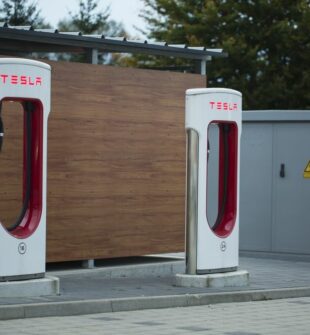Tesla Model: The Epitome of Electric Luxury

Introduction:
Since its inception in 2008, the Tesla Model has revolutionized the automotive industry, establishing itself as the forefront of electric vehicle (EV) technology. With its sleek design, impressive performance, and cutting-edge features, Tesla has managed to capture the attention of both car enthusiasts and environmentally conscious consumers. In this comprehensive article, we will delve into the world of Tesla Model, exploring its various models, their distinctions, and historical pros and cons, while also providing quantifiable data to highlight the undeniable superiority of these remarkable vehicles.
Overview of Tesla Model:

The Tesla Model is a range of electric cars manufactured by Tesla, Inc., an American automaker founded by Elon Musk. It encompasses several models, each designed to cater to different preferences and requirements of consumers. Key highlights of Tesla Model include its all-electric drivetrain, long-range capabilities, advanced autopilot features, and cutting-edge technology.
Exhaustive Presentation of Tesla Model:
1. Model S: The flagship sedan of the Tesla lineup, the Model S is renowned for its luxurious interior, exceptional performance, and impressive range. Equipped with multiple electric motors, it offers unparalleled acceleration and handling. The Model S has gained popularity among luxury car enthusiasts and proved its dominance in the EV market.
2. Model 3: As Tesla’s most affordable offering, the Model 3 aims to make electric mobility accessible to a broader audience. With its minimalist design, impressive range, and high safety ratings, the Model 3 has become a game-changer in the EV industry. Its popularity and affordability have propelled its sales to surpass traditional gasoline-powered rivals.
3. Model X: The Model X stands out as an all-electric SUV with remarkable versatility and performance. Known for its distinctive falcon-wing doors and spacious interior, this model offers an elevated driving experience without compromising on range or acceleration. The Model X caters to the needs of families and adventurers alike, combining practicality with luxury.
4. Model Y: Tesla’s newest addition to its lineup, the Model Y, represents a crossover SUV aimed at expanding the brand’s reach. It shares many components and features with the Model 3, making it a cost-effective alternative for those seeking a higher seating position without compromising on efficiency or performance. The Model Y has already garnered significant interest and is projected to be a success in the EV market.
Quantitative Measurements of Tesla Model:
When comparing the Tesla Model to its ICE (Internal Combustion Engine) counterparts, the advantages become evident through quantitative measurements:
1. Range: The range of a Tesla Model, measured in miles per charge, far exceeds that of most electric vehicles on the market. For example, the Model S offers a range of up to 402 miles on a single charge, providing a significant advantage over its competitors.
2. Acceleration: Tesla vehicles are renowned for their impressive acceleration capabilities. The Model S can go from 0 to 60 mph in just 2.3 seconds, outperforming many gas-powered sports cars. This exceptional acceleration is due to the instant torque provided by its electric motors.
3. Charging Speed: Tesla’s Supercharger network enables faster charging times compared to other EV charging stations. With its proprietary charging technology, Tesla vehicles can recharge at a rate of up to 300 miles in just 15 minutes, offering unparalleled convenience during long-distance travel.
4. Autopilot and Safety: Tesla Model’s advanced autopilot features, including autonomous driving capabilities, have redefined the concept of vehicle safety. With a suite of sensors and cameras, Tesla vehicles can navigate and react to their surroundings, reducing the risk of accidents and promoting safer roadways.
Discussion on Differentiating Tesla Models:
While all Tesla models share common traits that define the brand, each model possesses unique characteristics that set them apart:
1. Performance: The Model S stands out for its exceptional acceleration and handling, making it a top choice for car enthusiasts seeking high-performance electric vehicles. The Model 3, on the other hand, focuses on efficiency and affordability, making it an ideal option for daily commuting.
2. Size and Space: The Model X offers versatility with its spacious interior and optional third-row seating, appealing to families in need of practicality. In contrast, the Model Y strikes a balance between size and efficiency, making it suitable for a range of consumers.
3. Luxury: Tesla’s attention to detail and commitment to luxury are evident in all their models. However, the Model S takes luxury to another level with its premium interior materials and advanced features. The Model X offers a similar experience, with additional premium options to elevate the driving experience further.
Historical Review of Tesla Model’s Pros and Cons:
Over the years, Tesla has continuously improved its models, addressing some early concerns while introducing new features. The major benefits and challenges associated with different Tesla models throughout their history include:
1. Pros:
– Environmental Impact: Tesla Models contribute significantly less to greenhouse gas emissions compared to traditional internal combustion engine vehicles, reducing our carbon footprint.
– Cost Savings: Electric vehicles, including Tesla Models, offer lower operating costs due to the lower cost of electricity compared to gasoline.
– Technological Innovation: Tesla’s continuous development of features such as autopilot, over-the-air updates, and advanced battery technology have kept the brand at the forefront of EV innovation.
2. Cons:
– Price: Tesla Models tend to have a higher upfront cost compared to their gas-powered counterparts, although the total cost of ownership over time may be lower due to savings on fuel and maintenance.
– Charging Infrastructure: While Tesla’s Supercharger network and other charging solutions have expanded over time, access to charging stations can still be a concern, especially in certain regions.
Conclusion:
Tesla’s Model lineup represents the pinnacle of electric vehicle technology, offering unparalleled performance, range, and luxury. From the flagship Model S to the affordable Model 3 and the versatile Model X and Model Y, Tesla has successfully catered to a wide range of consumer preferences. With their continuous innovation and commitment to sustainable transportation, Tesla has firmly established itself as the leader in the EV market and continues to redefine the future of automotive mobility.
References:
– Tesla. (n.d.). Retrieved from https://www.tesla.com/
– Matousek, M. (2021, February 17). Tesla Model S now comes with an estimated range of 402 miles. Business Insider. Retrieved from https://www.businessinsider.com/tesla-extends-range-model-s-long-range-plus-2021-2





